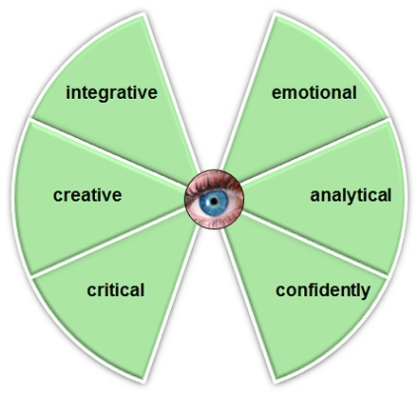Perspectives
Perspectives
Perspectives are mentally tinted angles on facts. This allows seizing and estimating a situation more comprehensively. At the same time, the situation is regarded and described from different views of the audience. The result is a comprehensive description of facts and communication contents from the respective view.
Perspectives consist of six areas: emotional, analytical, confident, critical, imaginative, and integrative.

Emotional view
The emotional perspective describes intuitive effects of the situation. These lead subliminally to pleasant and unpleasant feelings (e.g. joy, excitation and/or dislike, fear). This perspective guarantees that unwanted feelings are not stimulated, for example by avoiding negative stigma words (e.g. risk, legacy, sympathizer, and maximal credible accident).
Analytical view
The analytical perspective looks at the situation based on structured, logical analysis. In this perspective the topic is analyzed concerning context (where?), period (when?), participants (who?), activities (which?), resources (with what?), and convictions (why?) Additionally, the logical consistency is guaranteed. Thus, it ensures that no logical contradictions persist (e.g. necessary resources are available for the descriptive activities).
Confidential view
The confidential perspective develops a favorable prognosis. The positive aspects of the situation are emphasized and an optimistic future will be derived. In the end, one has optimistic conceptions that come from the circumstances (e.g. the planned results will be achieved in time and everybody is satisfied).
Critical view
The critical view checks the situation for possible flaws, problems or critical success factors. For this purpose, various thought experiments are executed that would be triggered by the question „what if… ", e.g. influence factors concerning employees, market, technologies, economy, and society.
Imaginative view
The imaginative perspective produces inspiring visions of the situation that are not suppressed by pragmatic objections or logical doubts. For this purpose, creativity is set free. The description of the circumstances should exaggerate each imaginable aspect.
Integrative view
The integrative perspective combines the various viewpoints into a consistent, all aspects covering picture. Tensions are reduced between the perspectives. A comprehensive description of the circumstance is the result. This perspective is starting point for the official version that has to be developed.
